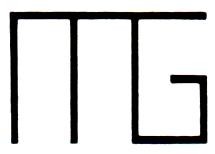"Lost wax" process
The lost wax method has been used for around 6,000 years and is still used in various ways today to cast metal for industrial, craft and art applications. It is mainly used for copper, silver and gold alloys. This technique is also known as fonte à cire perdue. The object that is to be cast in metal is first shaped in wax and subsequently melted in a fireproof shell. The negative form of the object is the left as a hollow mould. After casting the mould is broken to reveal the cast unique piece.
Ashanti casting technique
The Ashanti casting technique was developed by the Akan Ashanti people who live in Ghana. The model is made of beeswax, the casting mould and the crucible of clay with varying amounts of charcoal and horse manure. The casting mould and the crucible are connected. As a result the metal is melted without exposure to the oxidising ambient air and cast in an enclosed system by turning the mould. With this clever method, thin-walled objects can be made with great attention to detail without the use of complicated apparatus.
